Security Council Resolution 1701 after six months
at the Israel Intelligence' Heritage & Commemoration Center (IICC)
March 4 , 2007
The implementation of Security Council Resolution 1701 after six months
Interim report
[Photo] UNIFIL side by side with Hezbollah: a Spanish battalion UNIFIL force passing by a poster of Hassan Nasrallah decorated with Hezbollah flags in the village of Addoussiyeh in south Lebanon (Ali Hashisho for Reuters, February 8, 2007). 1. An examination of the implementation of Security Council Resolution 1701 six months after its passing shows that that implementation to be only partial and that the Lebanese army and UNIFIL have not enforced its essential provisions . Basically, south Lebanon has not become a demilitarized zone free of terrorist organizations and their weapons, Hezbollah as an organization was not disarmed, the process of rehabilitating its military strength continues, and an effective embargo on smuggling arms from Syria to Lebanon has not been imposed. The quiet prevailing in south Lebanon since the war ended is to a great extent a function of Hezbollah's focus on rehabilitating its military strength. In our assessment, as the rehabilitation process continues and Hezbollah's confidence increases, so will its daring and willingness to continue disregarding the implementation of Resolution 1701. Interim report on the implementation of Resolution 1701 2. On August 12, 2006, the Security Council passed Resolution 1701, which ended the second Lebanon war and was supposed to create a new situation in south Lebanon . The resolution went into effect on August 14, after having been approved by the governments of Israel and Lebanon . 1 3. The Resolution had two main components : A. Regarding south Lebanon (especially the area south of the Litani River): security arrangements in south Lebanon were based on the deployment of up to 15,000 Lebanese troops concurrent with the withdrawal of the Israeli forces to the international boundary between the two countries (the Blue Line). The Lebanese army was supposed to enforce the authority of the Lebanese government over south Lebanon , where there was supposed to be only one source of weapons, the Lebanese government, and to rid the area of the presence and activities of Hezbollah and other terrorist groups. To carry out the mission the Lebanese army was to be supported by an upgraded UNIFIL force of up to 15,000 soldiers. B. Regarding north Lebanon : the resolution called for the disarming of Hezbollah and other terrorist groups (without specifically naming them) based on previous Security Council resolutions and internal Lebanese decisions (mainly the 1989 Taif agreement). The agreement imposed an embargo on delivering arms to Hezbollah (and other terrorist groups) and called for the Lebanese government to supervise the Lebanon borders (on land, at sea and in the air) with UNIFIL support (should the Lebanese government so desire). The resolution also calls for the unconditional release of the Israeli soldiers abducted by Hezbollah. 4. An examination of the implementation of Security Council Resolution 1701 shows the following : A. Regarding south Lebanon : an unprecedented Lebanese army force was deployed (approximately 10,000 soldiers, i.e., four brigades), supported by an upgraded UNIFIL force of more than 12,000 soldiers. Their deployment created a new situation on the ground and Hezbollah is no longer the only significant force operating in south Lebanon . So far the area has been quiet (with the exception of a single incident) because Hezbollah, which focuses on rebuilding its military strength, has avoided initiating incidents. However, the Lebanon army and UNIFIL do not act to demilitarize south Lebanon and to oust the terrorist organizations and their weapons, as demanded by Resolution 1701, nor do they effectively hamper Hezbollah in its military rehabilitation. Hezbollah continues its routine operational activities in south Lebanon while adapting to the new situation, enabling it to deal easily with Lebanese army and UNIFIL actions. B. Regarding north Lebanon : Hezbollah and other terrorist organizations (including groups belonging to the global jihad and the Palestinian terrorist organizations based in the refugee camps) were not disarmed. No serious attempt was made by the Lebanese government to deal with them. In Beirut and the Beqa'a Valley (as in the south), Hezbollah's military infrastructure continues its rehabilitation with no meaningful interference. The embargo on delivering weapons to Hezbollah is not enforced and arms continue regularly to cross the Syrian-Lebanese boundary. (The Lebanese army's impounding of a truckload of Katyushas was an exceptional act and not part of an overall policy.) The two abducted IDF soldiers held by Hezbollah are still in captivity and the Lebanese government does nothing to secure their release. 5. The crisis faced by the Lebanese government over the past few months, manifested by Hezbollah's efforts to collapse Fuad Seniora's government, also makes it difficult to enforce Security Council Resolution 1701. The Lebanese government is struggling to survive and avoids challenging Hezbollah's status in south Lebanon , and the Lebanese army has even had to move troops from the south to Beirut to deal with the internal crisis. The developments have an impact and are liable to influence UNIFIL's resolve to carry out its mission in supporting the Lebanese army in implementing Security Council Resolution 1701. 6. The quiet and lack of incidents that have prevailed in south Lebanon since the end of the second Lebanon war are to a great extent a function of Hezbollah's focus on rearming. However, the situation may change, and in our assessment the more progress Hezbollah makes, the more daring and willing it will become to initiative incidents and increase the erosion of the implementation of Resolution 1701. Hassan Nasrallah's growing self-confidence was manifested in a defiant speech given on February 16, in which he publicly admitted the his organization was rearming and secretly moving weapons to south Lebanon . 2 [Photo]
[Photo] Hassan Nasrallah publicly admitting that Hezbollah has rearmed and is secretly moving weapons to south Lebanon (Al-Manar TV, February 16).
Hassan Nasrallah publicly admitting that Hezbollah has rearmed and is secretly moving weapons to south Lebanon (Al-Manar TV, February 16). [Photo] UNIFIL operations along the Lebanese-Israeli border (Al-Manar TV, October 24, 2006). The UNIFIL forces avoid confronting Hezbollah to enforce Security Council Resolution 1701. 7. This document has two appendices: A. Appendix I : A comparison between the main points of Resolution 1701 and its implementation (as of February 2007) B. Appendix II : Maps of the Lebanese army and UNIFIL deployment in south Lebanon Appendix I The main provisions of Security Council Resolution 1701
and the status of their implementation No. Provision Implementation 1 An end to the hostilities and the establishment of a permanent ceasefire along the international Israeli-Lebanese border (the Blue Line, delineated by the UN's cartographers when Israel withdrew from Lebanon in May 2000). The resolution marked the end of the second Lebanon war. In general the ceasefire has been maintained with the exception of one incident between Israel and Hezbollah. On February 5 the IDF uncovered a chain of side charges in the central sector of south Lebanon (near moshav Avivim) which was apparently placed there by Hezbollah. During the follow-up operation on February 7 to uncover other charges the Lebanese army fired at the IDF, which returned fire. 2 The Lebanese government will enforce its authority and control of all Lebanon . As part of that, the Lebanese army will deploy in south Lebanon concurrent with the IDF's withdrawal. Also mentioned is the decision made by the Lebanese government on August 7 regarding the deployment of up to 15,000 Lebanese soldiers armed with the necessary weapons and supported by UNIFIL forces. The Lebanese has broadly deployed its forces in the south (10,000 soldiers: Brigades 6, 10, 11 and 23). Approximately 8,000 soldiers have been deployed along the Syrian-Lebanese boundary, Brigades 1, 5 and 8 plus commando units). The Lebanese army in the south views its role, first and foremost, as preserving quiet in the region. However, it avoids direct confrontations with Hezbollah and does not take effective action against the smuggling of weapons to Hezbollah . The Lebanese army has shown readiness to collaborate with Hezbollah in several fields, including help in smuggling weapons and evading UNIFIL roadblocks. 3 The Lebanese government will be supported by a large, upgraded UNIFIL force and will undertake broader missions . The operative provisions of the resolution allow for up to 15,000 UNIFIL solders and broader missions. The main missions are supervision of the end of the war, supporting the Lebanese army to deploy in the south as far as the Blue Line and to establish its authority, and to provide humanitarian support for the civilian population. The scope of UNIFIL's action has been widened and it is charged with aiding the Lebanese government (should the government request) to secure its boundaries to prevent weapons from being smuggled into its territory. The UNIFIL force is significantly larger than it was before the war. Currently there are approximately 10,500 land forces in Lebanon and 1,800 marines deployed along approximately 12 miles of the Lebanese coast. UNIFIL is shortly expected to be increased to 12,5000. The principal countries which contributed forces to UNIFIL: Italy (two infantry battalions and regional headquarters), France (two infantry battalions), Spain (an infantry battalion, an interference force and regional headquarters), Indonesia , Ghana , India , Malaysia and Nepal (one infantry battalion each). UNIFIL, especially the European battalions, try to locate and confiscate weapons. The UNIFIL soldiers have recently become bolder, leading to friction with Hezbollah and the local population. UNIFIL avoids frontal confrontations with Hezbollah and does not disarm the organization as required by Resolution 1701. UNIFIL does not aid (and was not asked to aid) the Lebanese government in securing its borders and preventing weapons from being smuggled into Lebanese territory. 4 Security arrangements will be determined for the region between the international boundary (the Blue Line) and the Litani River . Only the Lebanese government and UNIFIL will operate in the above region and armed groups (i.e., Hezbollah) will be forbidden to enter; weapons will be forbidden and “assets” (i.e., posts and fortifications) will not be allowed. The principle that only Lebanese government security forces will be armed is not maintained. Hezbollah continues to preserve and rehabilitate its military strength in south Lebanon , and to bring in weapons. Hezbollah is vigorously rebuilding its military infrastructure in south Lebanon in both populated and unpopulated areas. In addition, the Palestinian terrorist organizations have strongholds in the refugee camps. On the other hand, the Lebanese army and massive UNIFIL deployments in south Lebanon make it difficult for Hezbollah to treat the area as its own and it is no longer the only power in the region. Therefore it has been forced to change its methods and maintain low visibility in an attempt to adapt itself to the new situation. 5 The “armed militias” in Lebanon are to be disarmed and disbanded in accordance with both Security Council Resolution 1559 and the Taif Accord (1989). The UN Secretary General is to present his proposals to the Security Council for disarming the armed groups (mainly Hezbollah) within 30 days. The Lebanese government has made no effort to disarm or disband “the armed militias,” including Hezbollah, groups belonging to the global jihad and the Palestinian terrorist organizations. Hezbollah continues to preserve it military infrastructure thoroughly Lebanon , in the south, in southern suburbs of Beirut and in the Beqa'a Valley, and it has no intention of disarming. Since the end of the second Lebanon war Hezbollah has been rehabilitating its military capabilities and rebuilding its might while internalizing the lessons of the war, all with no significant interference. Since the end of the second Lebanon war groups belonging to the global jihad have significantly strengthened. 6 The abducted Israeli soldiers are to be unconditionally released (a provision appearing in the preamble in the context of the end of the hostilities but not a condition of the end of the fighting). An effort is to be made to find a solution for the problem of the Lebanese prisoners detained in Israel , but no direct link is made between those efforts and the release of the IDF soldiers. The IDF soldiers have not been released, no sign of life has been received and the Red Cross has not been allowed access to them. The Lebanese government does nothing to promote the release of the two abducted soldiers or of the Lebanese prisoners. 7 There will be no sales or supply of arms and related materiel to Lebanon except as authorized by its Government : A. The Lebanese government is called upon to secure its boundaries to ensure that weapons will not enter its territory without its approval. B. All other countries [a hint at Iran and Syria ] are called upon to prevent arms from being supplied by their nationals or from their territories or using their flag vessels or aircraft to Lebanon (i.e., to Hezbollah and other terrorist organizations). The weapons embargo has not been enforced, and Hezbollah receives regular deliveries of all types of weapons . Iran and Syria provide Hezbollah with the weapons it wants by smuggling them across the Lebanese-Syrian border. The Lebanese government takes no effective action to enforce the embargo and refrains from asking UNIFIL for support in preventing weapons smuggling, although according to Resolution 1701 it has the option to do so. The Lebanese army's impounding the truckload of Katyushas on February 8, which Hezbollah admitted were its property, was an exceptional event and not part of a comprehensive policy. 8 Regarding the Shebaa Farms , the UN Secretary General is asked to propose delineation of the international borders of Lebanon , especially in those areas where the border is disputed or uncertain, including by dealing with the Shebaa farms area, to present his proposals to the Security Council within 30 days. No significant progress has been made in finding a solution for the issue of the Shebaa Farms. The Secretary General appointed a cartographer to examine the topic, although apparently his work has been delayed by the Lebanese government's lack of cooperation. 9 The Blue Line (the internationally recognized border between Israel and Lebanon ) is to be respected . The Lebanese government has complained of Israeli Air Force flights over its territory in violation of Lebanon 's sovereignty. Because of the buildup of Hezbollah's military power, the unending passage of smuggled arms into Lebanon from Syria and the persistent threat of terrorism from Lebanon , Israel aerial photo flights over Lebanese territory. The issue of the village of Ghajar remains a matter of contention, as it was before the war. An agreement has been reached by Israel and Lebanon but has not yet received final ratification from the Lebanese government. Its main points are that the residents of Ghajar will remain Israeli citizens, Israel will retain sovereignty over the southern part of the village, and the northern part will receive special status and be the responsibility of the Lebanese army with UNIFIL support. Even such an agreement will not solve the problem of the village of Ghajar , and it will remain a loophole for terrorist and criminal (smuggling) activities. Appendix II UNIFIL deployment in south Lebanon
[Photo] Lebanon army deployment in south Lebanon
[Photo]
1 For further information see our August 13 Bulletin entitled “Analysis of UN Security Council Resolution 1701 to end the war and an examination of its significance (primary evaluation),” . 2 For further information see our February 23 Bulletin entitled “Hezbollah leader Hassan Nasrallah publicly admits that his organization is rearming and secretly transporting arms to south Lebanon, in blatant violation of Security Council Resolution 1701. ,” .
Back to Top
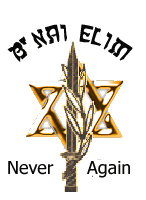



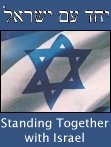

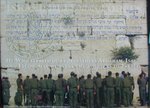

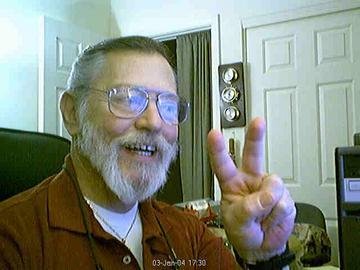




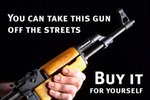
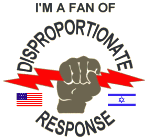
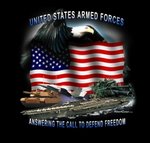


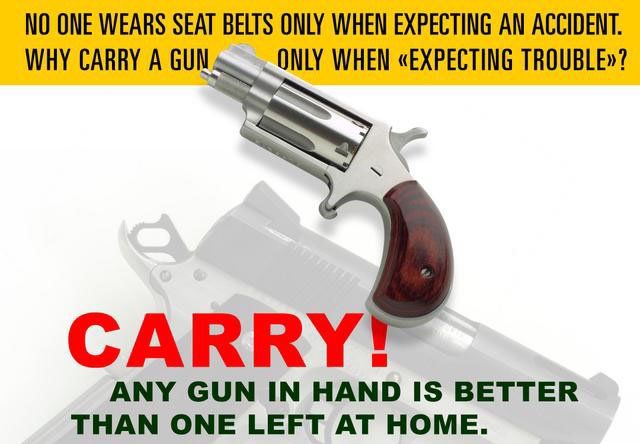


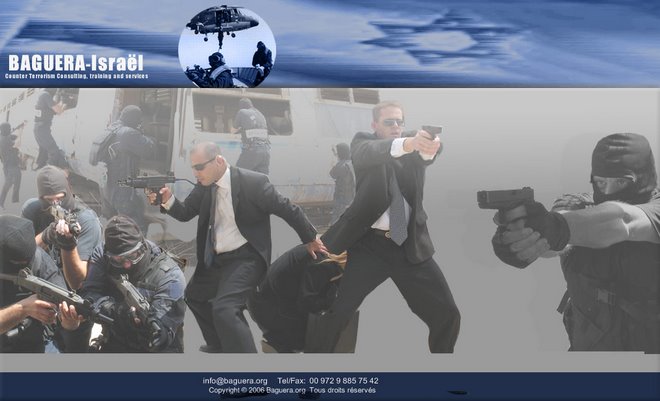



No comments:
Post a Comment